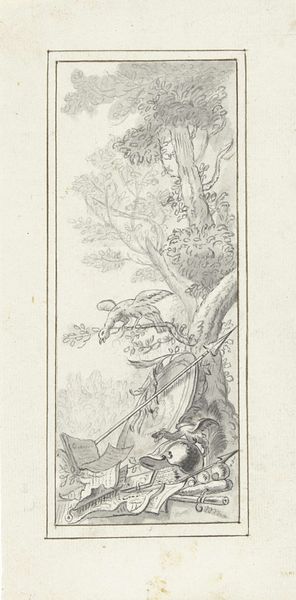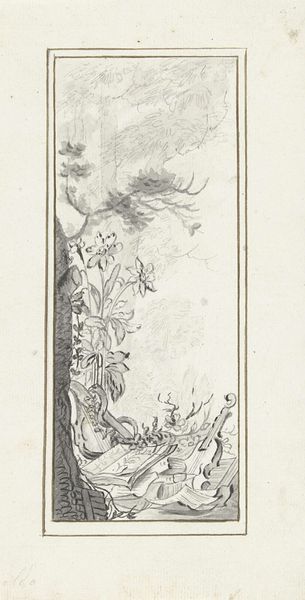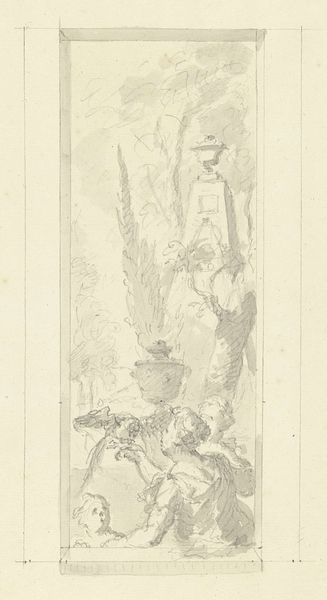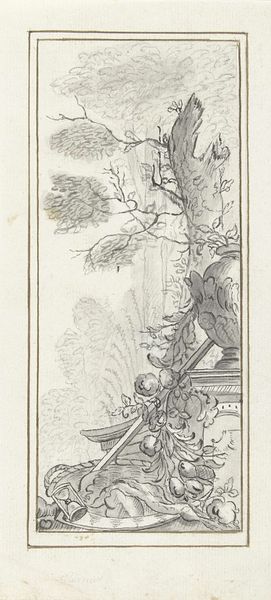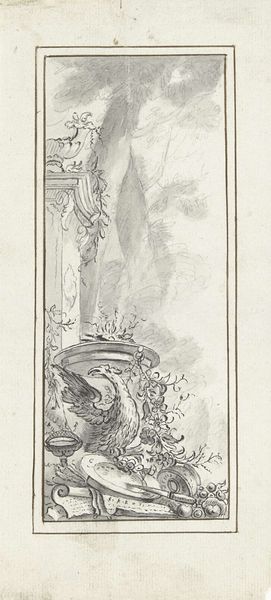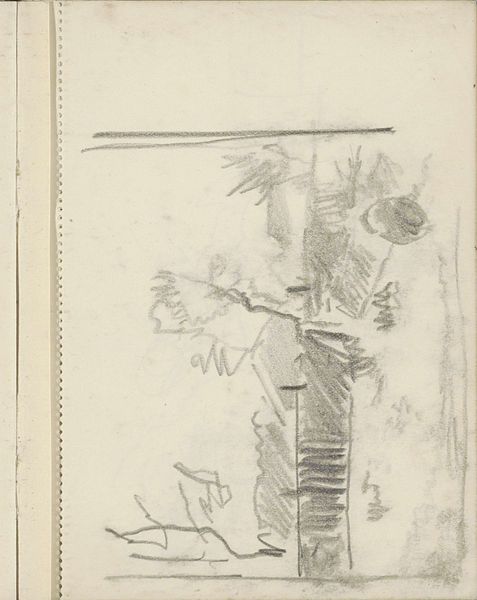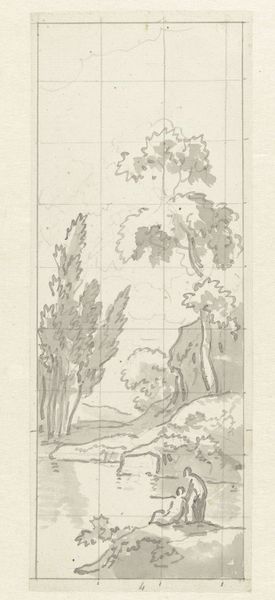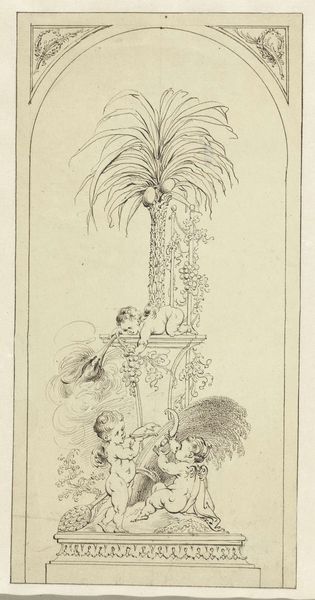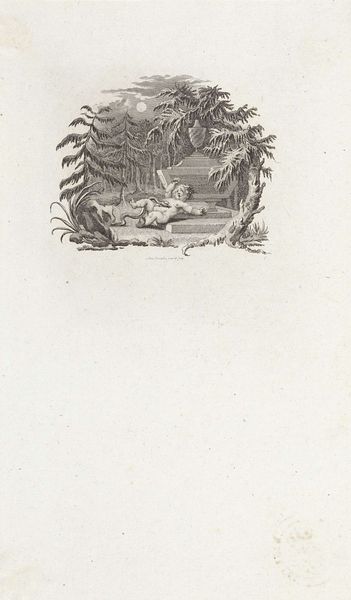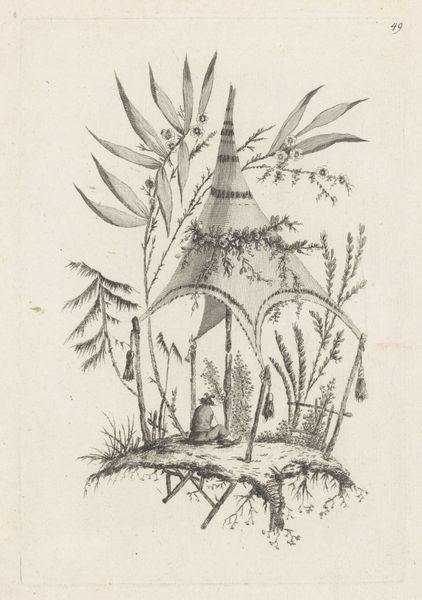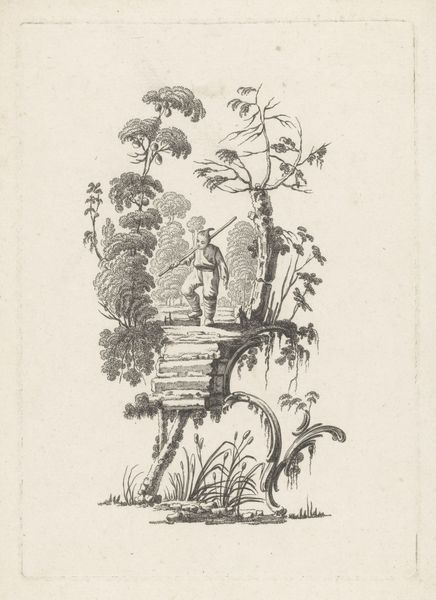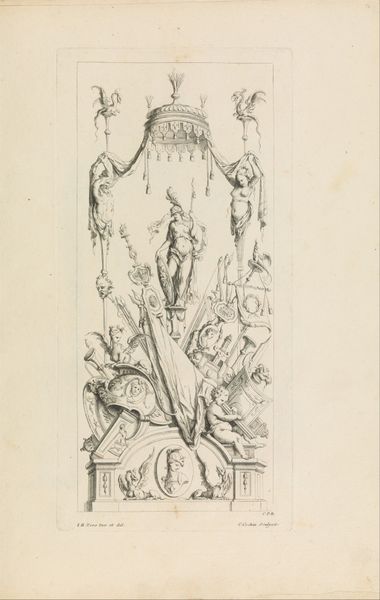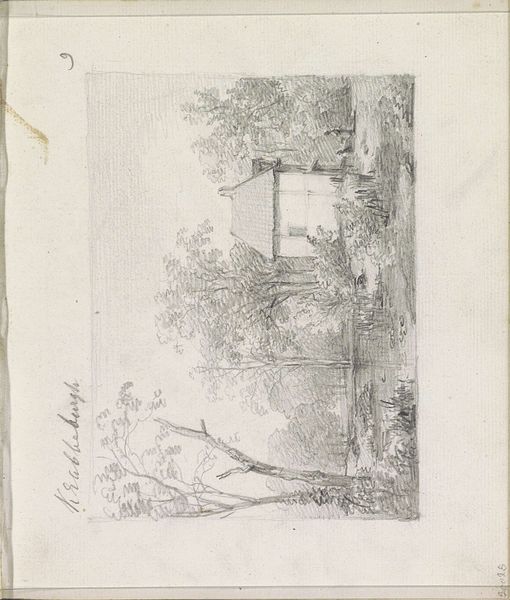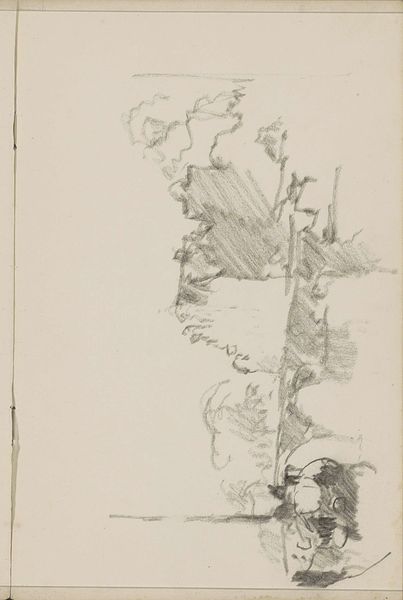
Ontwerp voor een kamerversiering: attributen van Mercurius, voor de middag 1767 - 1823
0:00
0:00
drawing, pencil
#
drawing
#
neoclacissism
#
landscape
#
figuration
#
pencil
Dimensions: height 249 mm, width 129 mm
Copyright: Rijks Museum: Open Domain
Curator: This delicate drawing is entitled, "Ontwerp voor een kamerversiering: attributen van Mercurius, voor de middag," attributed to Abraham Meertens and created sometime between 1767 and 1823. It’s a pencil drawing, embodying elements of Neoclassicism. Editor: The first thing I notice is the subdued, almost ghostly quality. The monochromatic pencil work gives it a dreamlike appearance. Curator: Indeed. The careful arrangement of objects is key. Notice the integration of natural and classical elements: the landscape background fading into architectural details and then, in the foreground, symbolic items like the horn. The linear work seems designed to capture the eye. Editor: That linear style speaks volumes about the era. Neoclassicism placed such a strong emphasis on order and reason, drawing inspiration from ancient Greece and Rome. Here we see attributes of the God Mercurius placed deliberately among natural and humanistic motifs. How might its purpose be understood within 18th century society? Curator: Well, consider that "kamerversiering" translates to "room decoration." These designs offered the burgeoning middle classes access to high culture ideals of the period. Depicting wealth and travel, attributes linked to Mercurius signal both commercial success and perhaps more refined pursuits for the individual inhabiting the designed space. Editor: The objects speak to commerce, and prosperity—very interesting for this time of economic transformation. It brings a kind of authority into the personal space through its invocation of the classical. Also notice the balance of the landscape to the attributes. How intentional is that integration do you think? Curator: Given Meertens' proficiency, it's likely deeply deliberate. The softness of the landscape balances the starkness of the geometric forms of both architecture and attributed objects, enriching the whole composition. Without a touch of the verdant wild the attributes could lose some impact in that decorative scene. Editor: I concur. This drawing invites one to step back, decode these historical markers and engage with its understated complexity. It evokes the taste, but also the values, of a bygone era. Curator: A window into aspirations, then, captured with remarkable sensitivity and attention to form and texture, as is seen in the Neoclassical.
Comments
No comments
Be the first to comment and join the conversation on the ultimate creative platform.
